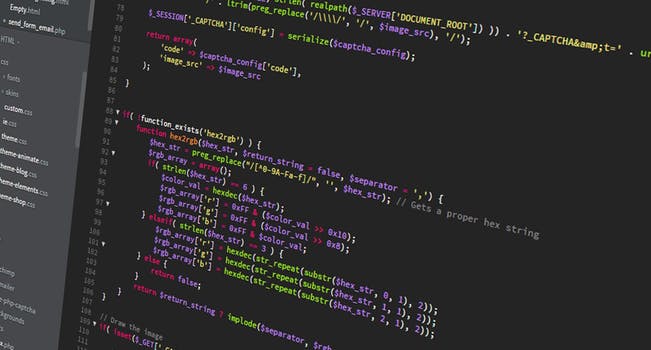TheDeveloperBlog.com
C-Sharp | Java | Python | Swift | GO | WPF | Ruby | Scala | F# | JavaScript | SQL | PHP | Angular | HTML
Computer Graphics Display Processor
Computer Graphics Display Processor with Computer Graphics Tutorial, Line Generation Algorithm, 2D Transformation, 3D Computer Graphics, Types of Curves, Surfaces, Computer Animation, Animation Techniques, Keyframing, Fractals etc.
Display Processor:It is interpreter or piece of hardware that converts display processor code into pictures. It is one of the four main parts of the display processor Parts of Display Processor
 Display File Memory: It is used for generation of the picture. It is used for identification of graphic entities. Display Controller:
Display Generator:
Display Console: It contains CRT, Light Pen, and Keyboard and deflection system. The raster scan system is a combination of some processing units. It consists of the control processing unit (CPU) and a particular processor called a display controller. Display Controller controls the operation of the display device. It is also called a video controller. Working: The video controller in the output circuitry generates the horizontal and vertical drive signals so that the monitor can sweep. Its beam across the screen during raster scans.  As fig showing that 2 registers (X register and Y register) are used to store the coordinate of the screen pixels. Assume that y values of the adjacent scan lines increased by 1 in an upward direction starting from 0 at the bottom of the screen to ymax at the top and along each scan line the screen pixel positions or x values are incremented by 1 from 0 at the leftmost position to xmax at the rightmost position. The origin is at the lowest left corner of the screen as in a standard Cartesian coordinate system.  At the start of a Refresh Cycle: X register is set to 0 and y register is set to ymax. This (x, y') address is translated into a memory address of frame buffer where the color value for this pixel position is stored. The controller receives this color value (a binary no) from the frame buffer, breaks it up into three parts and sends each element to a separate Digital-to-Analog Converter (DAC). These voltages, in turn, controls the intensity of 3 e-beam that are focused at the (x, y) screen position by the horizontal and vertical drive signals. This process is repeated for each pixel along the top scan line, each time incrementing the X register by Y. As pixels on the first scan line are generated, the X register is incremented throughxmax. Then x register is reset to 0, and y register is decremented by 1 to access the next scan line. Pixel along each scan line is then processed, and the procedure is repeated for each successive scan line units pixels on the last scan line (y=0) are generated. For a display system employing a color look-up table frame buffer value is not directly used to control the CRT beam intensity. It is used as an index to find the three pixel-color value from the look-up table. This lookup operation is done for each pixel on every display cycle. As the time available to display or refresh a single pixel in the screen is too less, accessing the frame buffer every time for reading each pixel intensity value would consume more time what is allowed:  Multiple adjacent pixel values are fetched to the frame buffer in single access and stored in the register. After every allowable time gap, the one-pixel value is shifted out from the register to control the warm intensity for that pixel. The procedure is repeated with the next block of pixels,and so on, thus the whole group of pixels will be processed. Display Devices:
The most commonly used display device is a video monitor. The operation of most video monitors based on CRT (Cathode Ray Tube). The following display devices are used:
Next TopicCathode Ray Tube (CRT)
|
Related Links:
- Computer Network | Transport Layer Protocols
- Computer Network | Application Layer
- Computer Graphics Cathode Ray Tube | CRT
- Computer Graphics Direct View Storage Tubes
- Computer Graphics Flat Panel Display
- Computer Graphics | Input Devices
- Computer Graphics Scan Conversion Definition
- Computer Graphics | Trackball
- Computer Graphics | Light Pen
- Computer Graphics | Image Scanner
- Computer Graphics | Output Devices
- Computer Graphics | Plotters
- Computer Graphics Scan Converting a Point
- Computer Graphics Scan Converting a Straight Line
- Computer Graphics DDA Algorithm
- Computer Graphics Bresenham's Line Algorithm
- Computer Graphics Defining a Circle
- Computer Graphics Boundary Fill Algorithm
- Computer Graphics Flood Fill Algorithm
- Computer Graphics Scan Line Polygon Fill Algorithm
- Computer Graphics | Line Clipping
- Computer Graphics Introduction of Transformation
- Computer Graphics Translation
- Computer Graphics Scaling
- Computer Graphics Rotation
- Computer Graphics Reflection
- Computer Graphics Shearing
- Computer Graphics Homogeneous Coordinates
- Computer Graphics Composite Transformation
- Computer Graphics Window
- Computer Graphics Window to Viewport Co-ordinate Transformation
- Computer Graphics Zooming
- Computer Graphics Panning
- Computer Network | Error Correction
- Computer Network | Error Detection
- Computer Architecture VS Computer Organization
- Computer Instructions | Computer Organization and Architecture Tutorial
- Computer Registers
- Computer Network Routing | Types of Routing
- Computer Network | Digital Signature
- PGP - Pretty Good Privacy
- Computer Graphics Programs
- Computer Graphics | Clipping
- Computer Network Tutorial
- Computer Graphics Tutorial
- Computer Graphics | Text Clipping
- Computer Graphics | Polygon
- Computer Graphics Pointing and Positioning Techniques
- Computer Graphics Elastic or Rubber Band Techniques
- Computer Graphics Color CRT Monitors
- Computer Graphics | Point Clipping
- Computer Graphics Dragging
- Computer Graphics 3D Shearing
- Computer Graphics Introduction of Shading
- Computer Network | TCP/IP model
- Computer Graphics Constant Intensity Shading
- Computer Graphics Gouraud shading
- Computer Graphics Phong Shading
- Computer Graphics Animation
- Computer Graphics Hidden Surface Removal
- Computer Graphics Back Face Removal Algorithm
- Computer Graphics Application Areas of Animation
- Computer Graphics Animation Functions
- Computer Graphics 3D Graphics
- Computer Graphics 3D Transformations
- Computer Graphics 3D Scaling
- Computer Graphics 3D Rotation
- Computer Graphics 3D Rotation about Arbitrary Axis
- Computer Graphics 3D Inverse Transformations
- Computer Graphics 3D Reflection
- Computer Organization and Architecture Tutorial | COA Tutorial
- Computer Graphics Bresenham's Circle Algorithm
- Computer Graphics Midpoint Circle Algorithm
- Computer Graphics Painter's Algorithm
- Computer Graphics Scan Line Algorithm
- Computer Graphics Area Subdivision Algorithm
- Computer Graphics 3D Modelling System
- Computer Graphics Projection
- Computer Graphics Perspective Projection
- Computer Graphics Parallel Projection
- Computer Network Digital Transmission
- Top 50 Computer Graphics Interview Questions (2021)
- Computer Graphics Midpoint Ellipse Algorithm
- HTTP - HyperText Transfer Protocol
- Computer Graphics Z-Buffer Algorithm
- Computer Graphics Display Processor
- Computer Network | Routing Algorithm
- Learn Computer Fundamentals Tutorial
- Computer Graphics Scan converting a Ellipse
- Computer Graphics Polynomial Method
- Computer Graphics Trignometric Method
- Computer Network Introduction
- Computer Network Components
- Computer Network Topologies
- Computer Network | Transmission Modes
- Computer Network Models
- Computer Network | Switching Techniques
- Computer Network | Switching Modes
- Computer Network | Client and Server Model
- DNS - Domain Name System
- FTP - File Transfer Protocol
- Telnet - Terminal Network
- Computer Network Features
- Computer Network Architecture
- Computer Network | Switching
- Computer Network Security
- Computer Network Privacy
- Computer Network | Transport Layer

